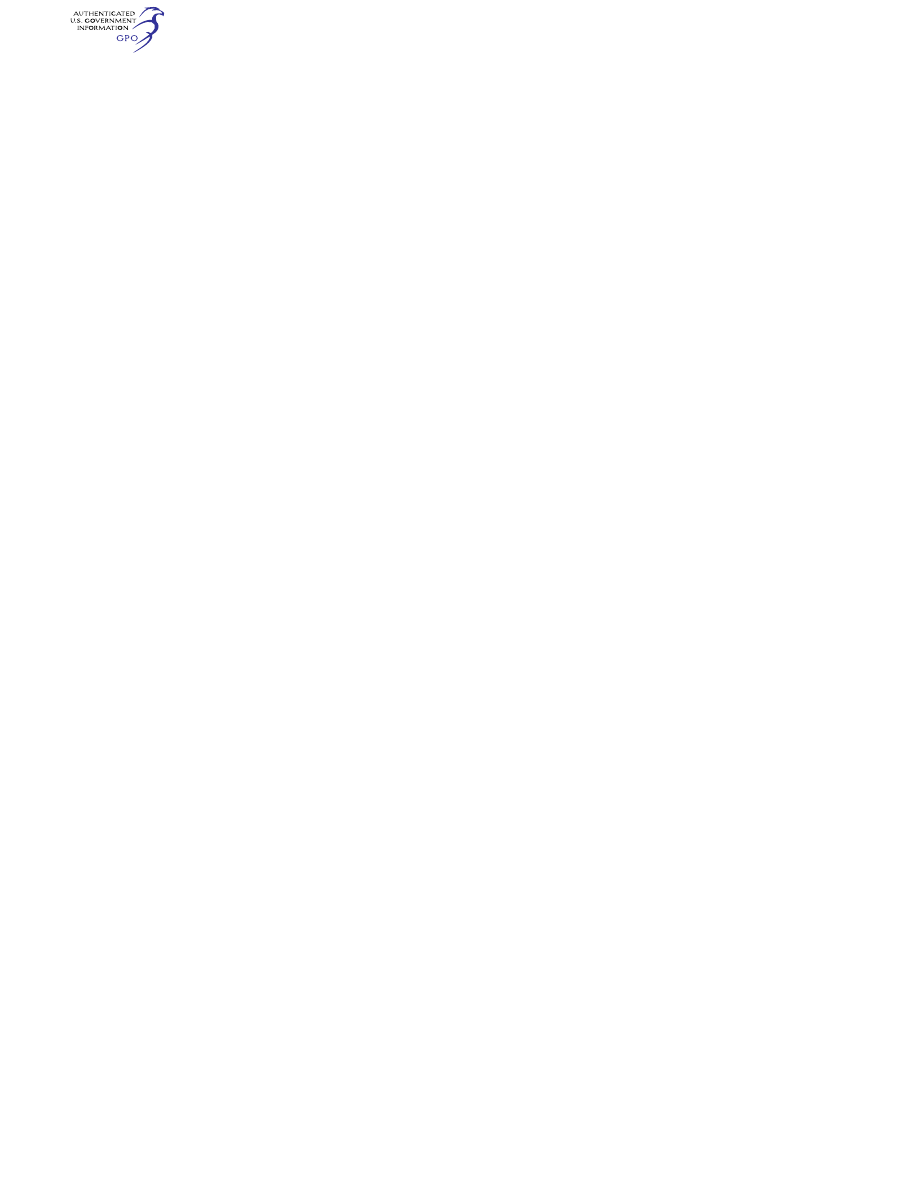
506
14 CFR Ch. I (1–1–24 Edition)
§ 27.547
vertically through the center of grav-
ity; and
(2) The vertical load prescribed in
paragraph (a)(1) of this section is ap-
plied simultaneously with an aft com-
ponent of 0.25 times the vertical com-
ponent.
(b) A side-load condition in which—
(1) A vertical load of 0.75 times the
total vertical load specified in para-
graph (a)(1) of this section is divided
equally among the floats; and
(2) For each float, the load share de-
termined under paragraph (b)(1) of this
section, combined with a total side
load of 0.25 times the total vertical
load specified in paragraph (b)(1) of
this section, is applied to that float
only.
M
AIN
C
OMPONENT
R
EQUIREMENTS
§ 27.547
Main rotor structure.
(a) Each main rotor assembly (in-
cluding rotor hubs and blades) must be
designed as prescribed in this section.
(b) [Reserved]
(c) The main rotor structure must be
designed to withstand the following
loads prescribed in §§ 27.337 through
27.341:
(1) Critical flight loads.
(2) Limit loads occurring under nor-
mal conditions of autorotation. For
this condition, the rotor r.p.m. must be
selected to include the effects of alti-
tude.
(d) The main rotor structure must be
designed to withstand loads simu-
lating—
(1) For the rotor blades, hubs, and
flapping hinges, the impact force of
each blade against its stop during
ground operation; and
(2) Any other critical condition ex-
pected in normal operation.
(e) The main rotor structure must be
designed to withstand the limit torque
at any rotational speed, including zero.
In addition:
(1) The limit torque need not be
greater than the torque defined by a
torque limiting device (where pro-
vided), and may not be less than the
greater of—
(i) The maximum torque likely to be
transmitted to the rotor structure in
either direction; and
(ii) The limit engine torque specified
in § 27.361.
(2) The limit torque must be distrib-
uted to the rotor blades in a rational
manner.
(Secs. 604, 605, 72 Stat. 778, 49 U.S.C. 1424,
1425)
[Doc. No. 5074, 29 FR 15695, Nov. 24, 1964, as
amended by Amdt. 27–3, 33 FR 14105, Sept. 18,
1968]
§ 27.549
Fuselage, landing gear, and
rotor pylon structures.
(a) Each fuselage, landing gear, and
rotor pylon structure must be designed
as prescribed in this section. Resultant
rotor forces may be represented as a
single force applied at the rotor hub at-
tachment point.
(b) Each structure must be designed
to withstand—
(1) The critical loads prescribed in
§§ 27.337 through 27.341;
(2) The applicable ground loads pre-
scribed in §§ 27.235, 27.471 through 27.485,
27.493, 27.497, 27.501, 27.505, and 27.521;
and
(3) The loads prescribed in § 27.547
(d)(2) and (e).
(c) Auxiliary rotor thrust, and the
balancing air and inertia loads occur-
ring under accelerated flight condi-
tions, must be considered.
(d) Each engine mount and adjacent
fuselage structure must be designed to
withstand the loads occurring under
accelerated flight and landing condi-
tions, including engine torque.
(Secs. 604, 605, 72 Stat. 778, 49 U.S.C. 1424,
1425)
[Doc. No. 5074, 29 FR 15695, Nov. 24, 1964, as
amended by Amdt. 27–3, 33 FR 14105, Sept. 18,
1968]
E
MERGENCY
L
ANDING
C
ONDITIONS
§ 27.561
General.
(a) The rotorcraft, although it may
be damaged in emergency landing con-
ditions on land or water, must be de-
signed as prescribed in this section to
protect the occupants under those con-
ditions.
(b) The structure must be designed to
give each occupant every reasonable
chance of escaping serious injury in a
crash landing when—
(1) Proper use is made of seats, belts,
and other safety design provisions;
VerDate Sep<11>2014
09:06 Jun 28, 2024
Jkt 262046
PO 00000
Frm 00516
Fmt 8010
Sfmt 8010
Y:\SGML\262046.XXX
262046
jspears on DSK121TN23PROD with CFR